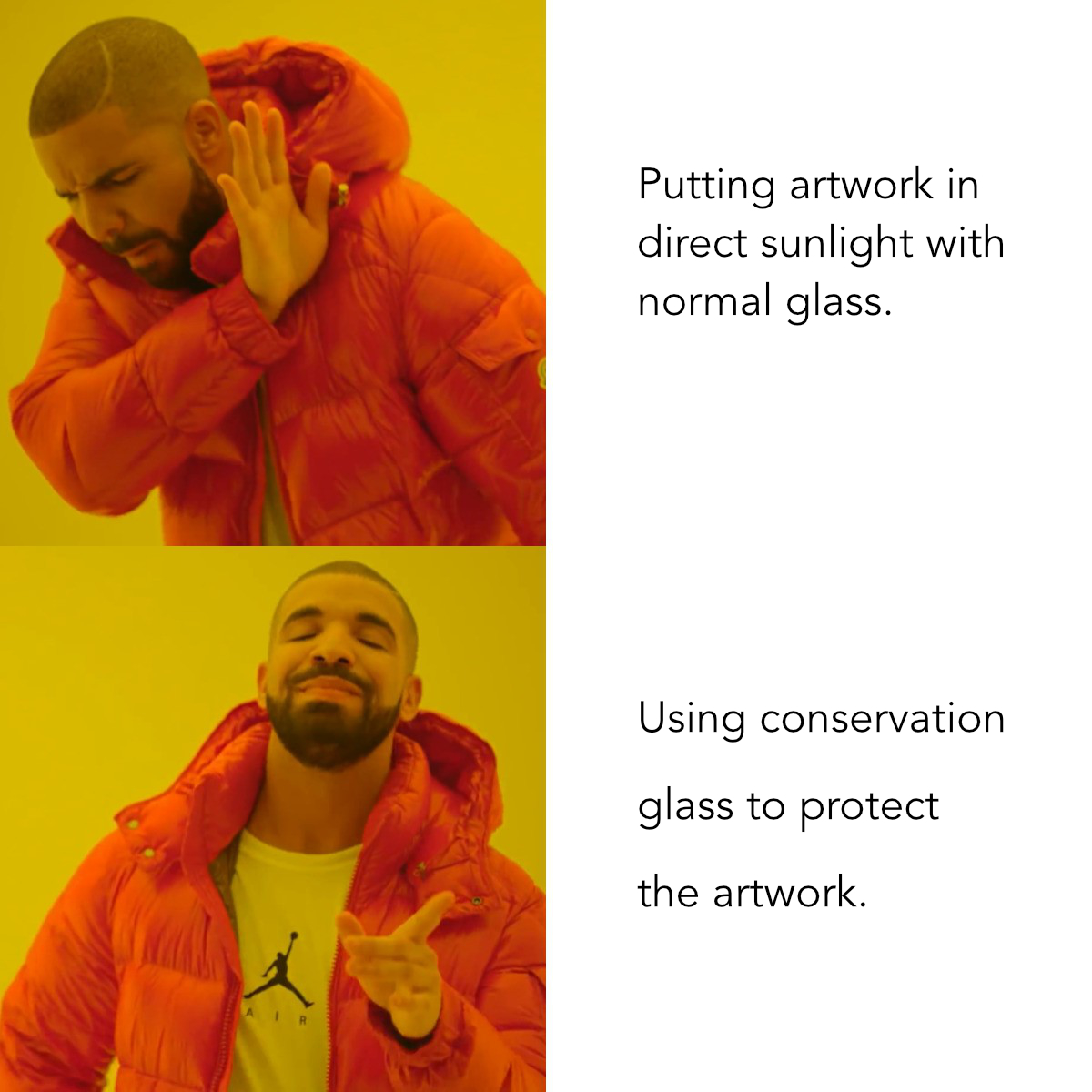
25 Aug Conservation Framing Know-How, Danger 1/3 : LIGHT
The Situation: You’ve got some original art to frame and now are faced with the question: How do I make sure my art stays protected & safe for years and years to come?
The Solution: Conservation Framing Techniques!
Okay…but what does that mean?
First we need to understand what exactly poses risks to artwork.
Generally, it can be summed up by the following Big 3 “Dangers” :
Light
Moisture
Chemical interactions
So what are we gonna do about these “Dangers”?? Fear not, we’ve got you (& your art). In today’s post, we’ll cover Danger #1, Light.
This is the most obvious of the dangers, and note that we didn’t say just “sunlight”, because other types of light can cause just as much damage (looking at you, fluorescents).
The measure of an art’s potential reaction to light is called its lightfastedness. Lightfastedness is a property of colourant (the paint or whatever material, not the paper or canvas) that describes how resistant to fading it is when exposed to light.
Light on a painted surface can break the chemical bonds of the pigment in question— a process called photodegradation. There are certain paints or dyes that resist light-caused photodegradation, these materials are called “lightfast”. Inorganic paints and dyes are more likely to be lightfast over organic colorants.
Fun fact: Colorants that lighten/darken/change over time are called “Fugitive Pigments”.
To really know the lightfastedness of your art, you’d need to review the materials used and their rating on the ASTM scale: indicated as I (excellent), II (good) or III (poor). Different elements of the painting process (binders/mediums/varnishes) protect the art by absorbing UV wavelengths, countering photodegradation. Oil paints for example, are based with oil (duh)- which is a base that better encapsulates pigments and therefore are able to withstand UV interaction and generally have a better lightfastedness than water-based mediums such as acrylic or watercolor.
Ok, ok, that’s a lot to consider right?
Well luckily the solutions are a little more simple than the process of diagnosing the lightfastedness of your art. And it boils down to GLASS.
A picture’s worth a thousand words so let’s check out these diagrams from our glass provider, TruVue, and dive into some of the specifics about your glass options!
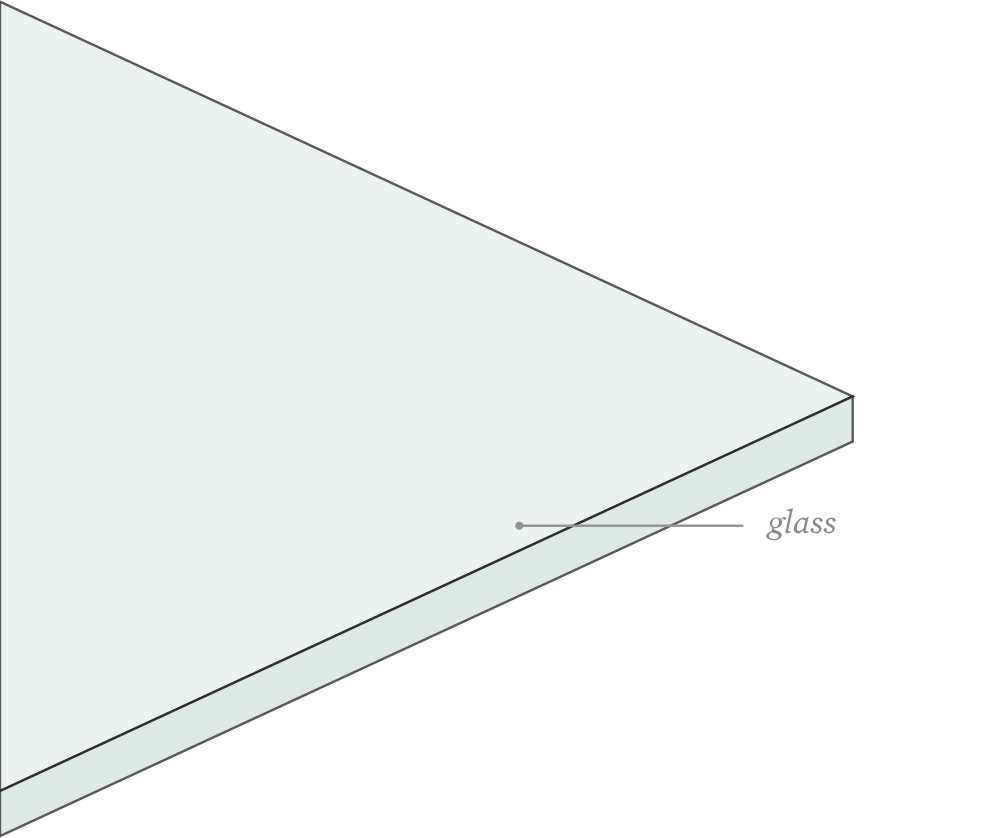
Normal Glass
Normal glass has no UV protection, and therefore, would be a bad pick for anything you’re trying to protect for a long time, but it’s totally acceptable for general framing on artwork that is reproducible, not anything special, etc.
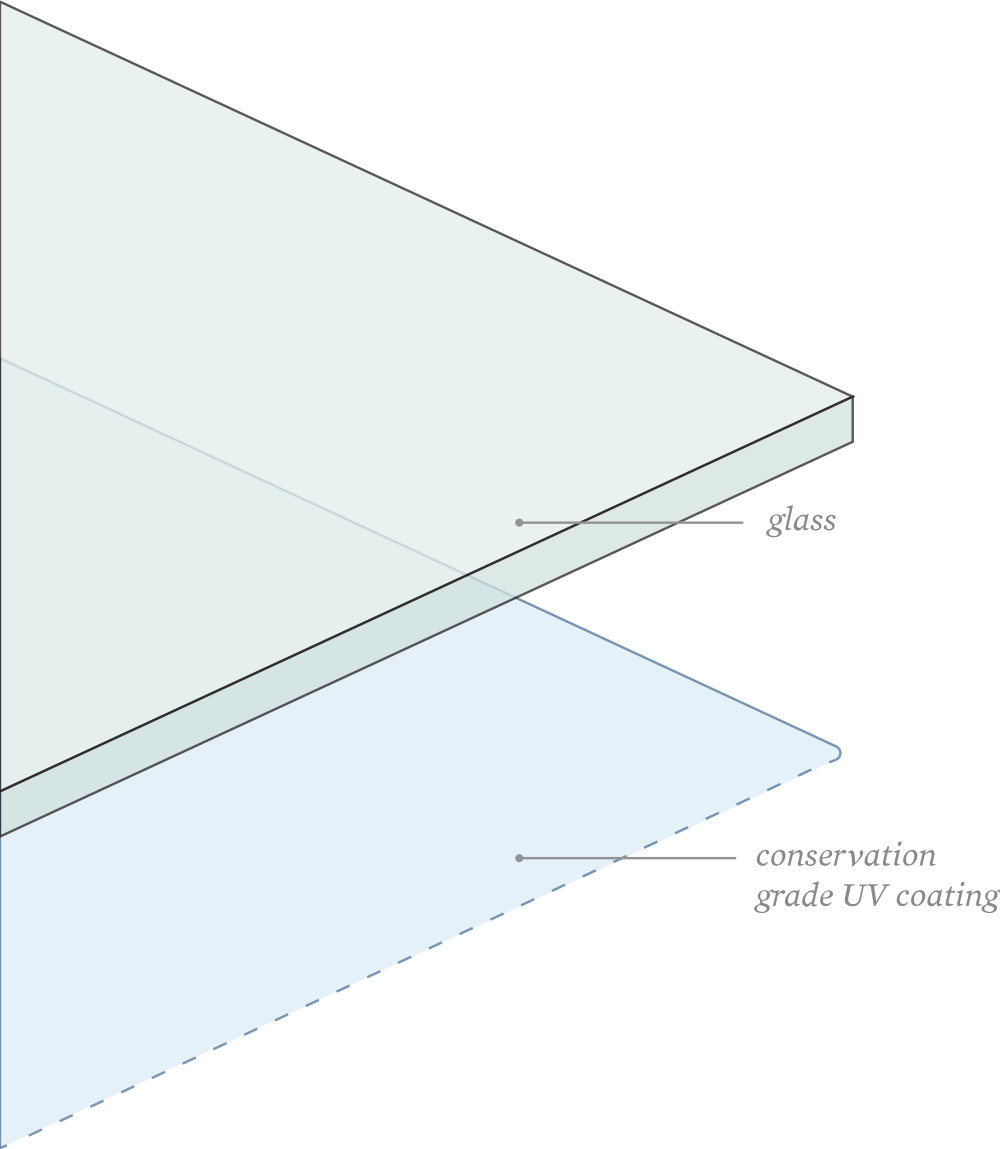
Conservation Clear
Next up would be “Conservation Clear” glass. This offers 99% UV protection. Great pick for protecting your artwork.
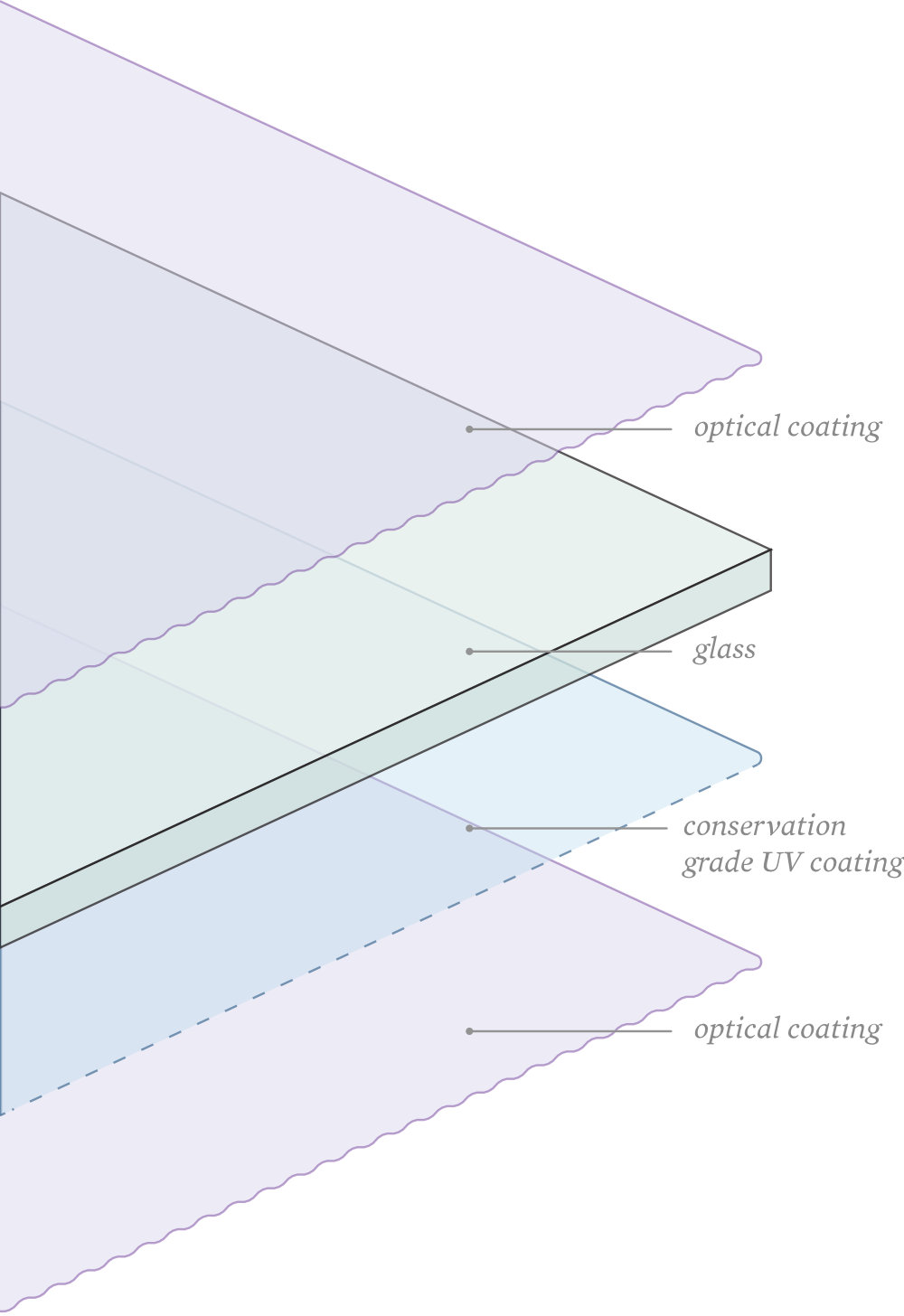
Museum Glass
Top of the line would be “Museum Glass”. The way in which this is different from Conservation Clear is that it also includes two layers of “optical coating”. This process offers optimal light transmission that works to effectively brighten colors. Museum and conservation glass both offer the same level of UV protection.
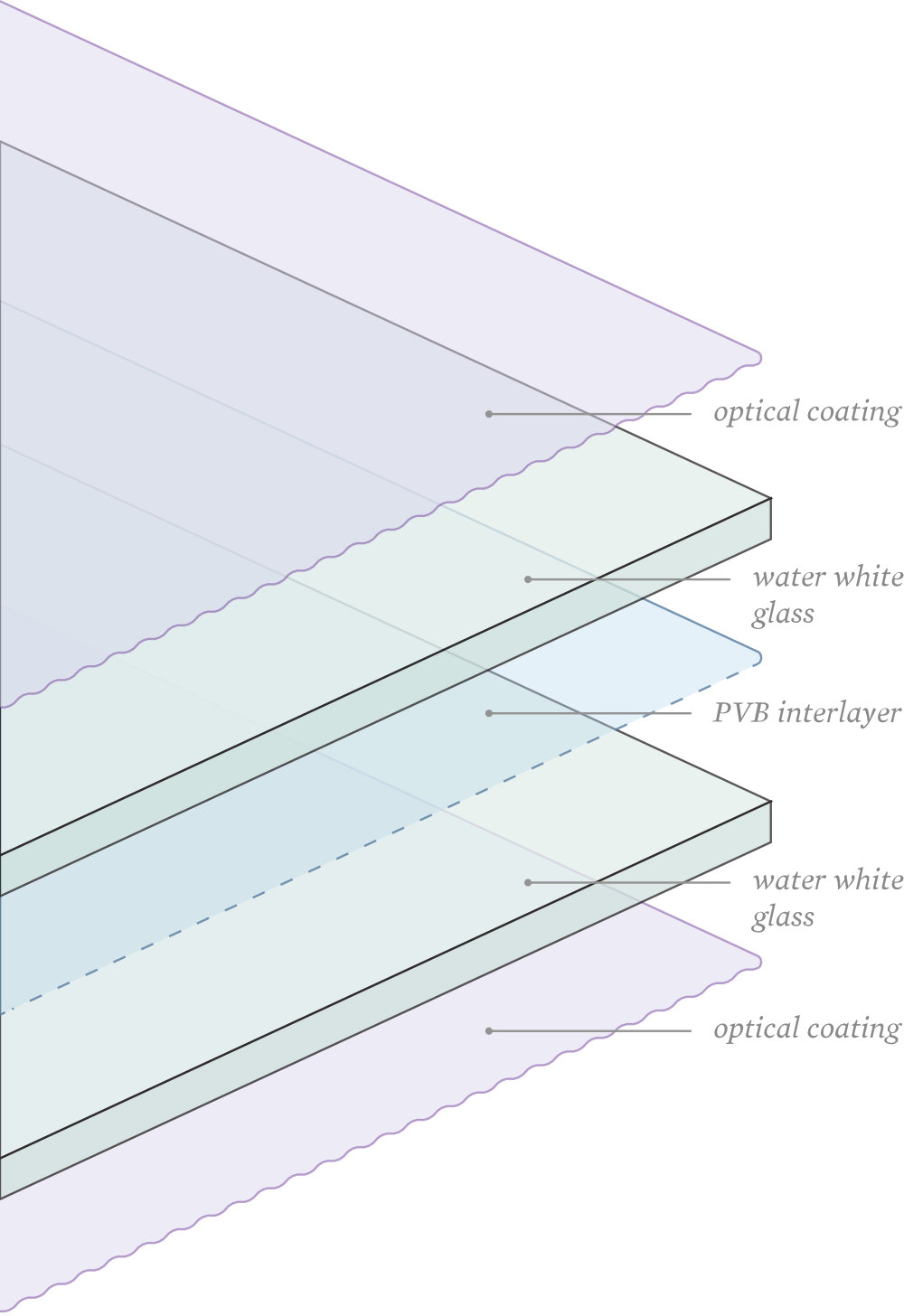
Ultravue Laminated Glass
Wanna get really real? There’s one more level up on glass that is less discussed amongst framers— it’s the Ultravue Laminated Glass option. This top-of-the-line glass is THE pick for irreplaceable artwork. On top of UV protection, optimal light transmission that brightens the color, and a “Water White” substrate that allows for crystal clear color transmission, it also offers shatter resistant safeguards so the artwork is protected even if the glass breaks or shatters.
Hopefully this gave you some insight into best practices for avoiding letting light ruin your artwork! Tune in for a deep dive into our next “danger”: Moisture.
Have questions/comments about light & glass options? We’d love to hear from you– Leave a comment below! Thanks for reading!



